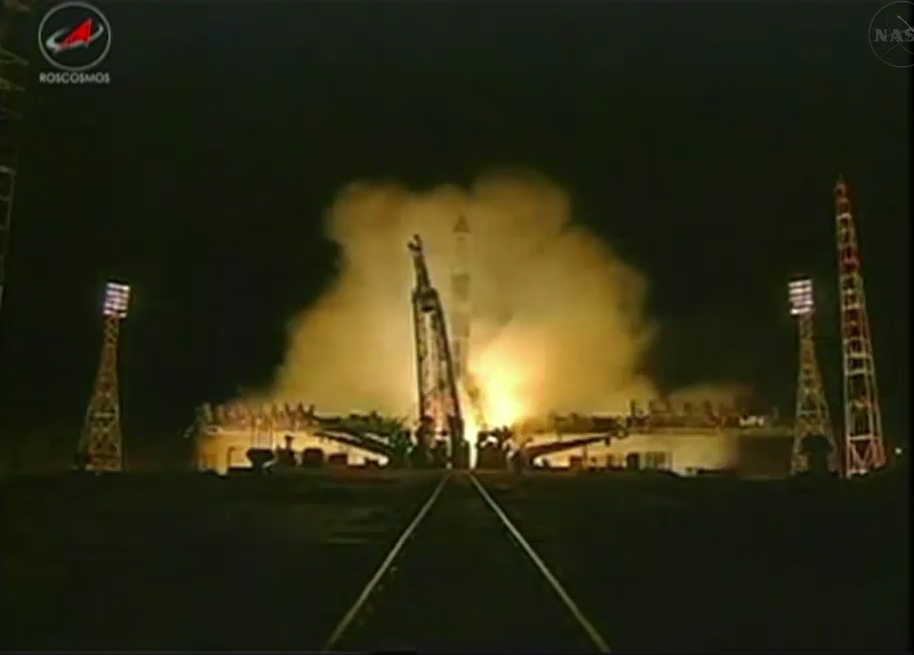Are Russia's Recent Space Woes a Sign of Larger Problems?

A string of high-profile failures in Russia's space program recently has left NASA hoping its space partner can get back on track soon. But some in the space industry are wondering if the issues are simple bad luck, or represent a deeper problem.
Most recently, faulty test procedures damaged the next manned Russian Soyuz space capsule, rendering it unfit to fly, and forcing NASA and Russia to delay the next crew launch to the International Space Station until a new capsule is ready.
NASA announced Feb. 2 that the flight would be pushed back by more than a month, until no earlier than May 15, while engineers investigate the problem and process the next capsule in line.
"This particular event is very unfortunate, but you know this is a complicated business and things happen," NASA's International Space Station program manager Mike Suffredini told reporters when announcing the delay. "To me, this is not indicative of some overarching problem at the Energia corporation," which is Russia's main space contractor.
So far this year, Russia has successfully launched two different space missions, both of them unmanned flights. On Jan. 25, the country's space agency launched a Soyuz rocket carrying a cargo ship for the space station. That mission was followed by yesterday's (Feb. 15) launch of a Proton rocket carrying a new communications satellite into orbit.
Earlier space failures
Russia's recent Soyuz capsule issue came after the August 2011 crash of an unmanned Soyuz rocket carrying the Progress 44 cargo freighter to the space station. The vehicle and its payload were destroyed just after liftoff when they crashed into Siberia.
Breaking space news, the latest updates on rocket launches, skywatching events and more!
Because of the similarity between that spacecraft and the boosters used to loft crews to orbit, the incident temporarily grounded all Soyuz vehicles while Russian space officials investigated. The next crew did not launch until November. [Infographic: Inside Russia's Soyuz Space Capsule]
Last fall also saw the failure of Russia's unmanned Phobos-Grunt mission, designed to collect rock samples from Mars' moon Phobos and return them to Earth. After the spacecraft's Nov. 8 launch, Phobos-Grunt did not leave Earth orbit and travel on to Mars as planned. Instead, the defunct probe crashed into the Pacific Ocean Jan. 15.
The year 2011 also saw a handful of other unmanned Russian rocket failures.
"Our Russian colleagues have had a number of challenges last year relative to launches and they’re taking that very seriously and are trying to look for any consistent clues across the board," Suffredini said.
Bad timing
The unfortunate circumstances come at a particularly unfortunate time for NASA, which retired its space shuttles last year and now relies on Russia to transport its astronauts to the International Space Station. The U.S. space agency has been encouraging private companies to develop spacecraft capable of carrying people to orbit, but those aren't expected to come online until 2016 or so.
Since Russia remains the only International Space Station partner capable of launching people to space, any issues with its Soyuz vehicles are especially worrying.
"The big deal is whether there are some systemic weaknesses in the Russian space industry that are resulting in a series of seemingly unrelated failures, but the question is whether they are unrelated failures," John Logsdon, space policy expert and professor emeritus at George Washington University in Washington, D.C., told SPACE.com in an email.
Logsdon pointed to funding issues as a possible source of some of the issues.
"I think they've been in the process of recovering from a decade of very low funding and then have passed through a period where they've had moderate funding, but only in recent years have they had fully adequate funding, and so it appears they may have lost some of their technical edge and they're in the process of rebuilding it," Logsdon said.
Russia has been experiencing some of the same budget tightening that the United States' space program has in recent years. It may have led to a loss of engineering talent that could be difficult to recover from.
"In terms of Russia’s recent failures, those involved in the Russian space program have pointed to several issues that need to be addressed — even in the Duma [Russian government] — especially the years of minimal funding, eroding skills and tools, reductions in the work force, and a dwindling knowledge base as many skilled people are retiring or going elsewhere for better opportunities," said Roger Launius, senior space history curator at the Smithsonian's National Air and Space Museum in Washington, D.C. "These, according to program officials have led to an erosion of capabilities."
Ultimately, NASA and Russian officials, as well as space experts, have said they are confident they can move past recent difficulties and continue to operate the space station through 2020 as planned.
"The Russian space program is one of the great successes of that nation and I would hope that the country’s leaders would move to correct these problems," Launius wrote in an email. "I am confident that the international partners will be able to continue to support the ISS with crew and cargo."
Staff writer Denise Chow contributed to this report. You can follow assistant managing editor Clara Moskowitz on Twitter @ClaraMoskowitz. Follow SPACE.com for the latest in space science and exploration news on Twitter @Spacedotcom and on Facebook.

Clara Moskowitz is a science and space writer who joined the Space.com team in 2008 and served as Assistant Managing Editor from 2011 to 2013. Clara has a bachelor's degree in astronomy and physics from Wesleyan University, and a graduate certificate in science writing from the University of California, Santa Cruz. She covers everything from astronomy to human spaceflight and once aced a NASTAR suborbital spaceflight training program for space missions. Clara is currently Associate Editor of Scientific American. To see her latest project is, follow Clara on Twitter.
